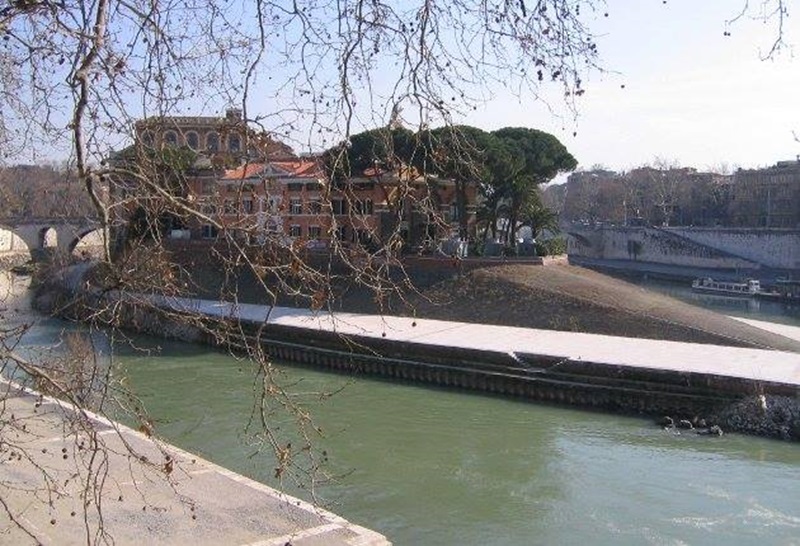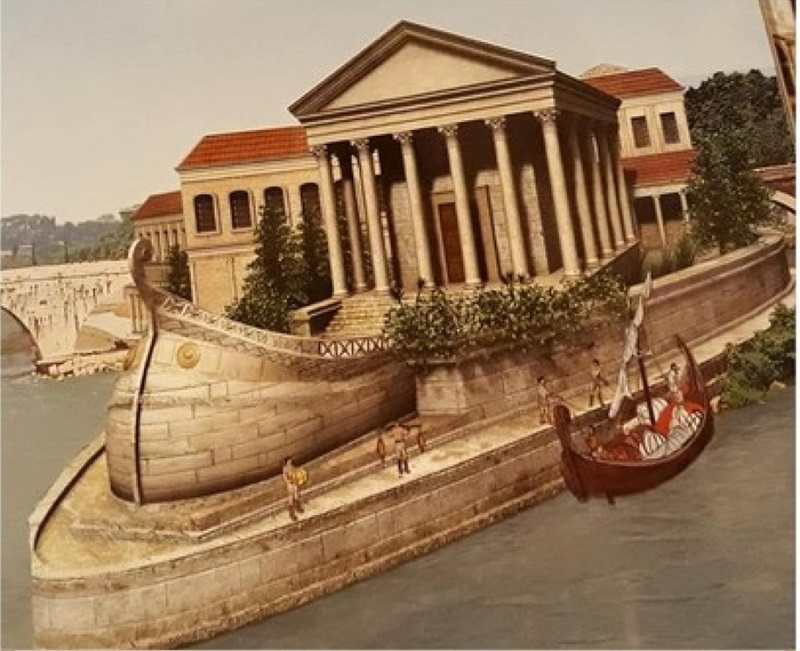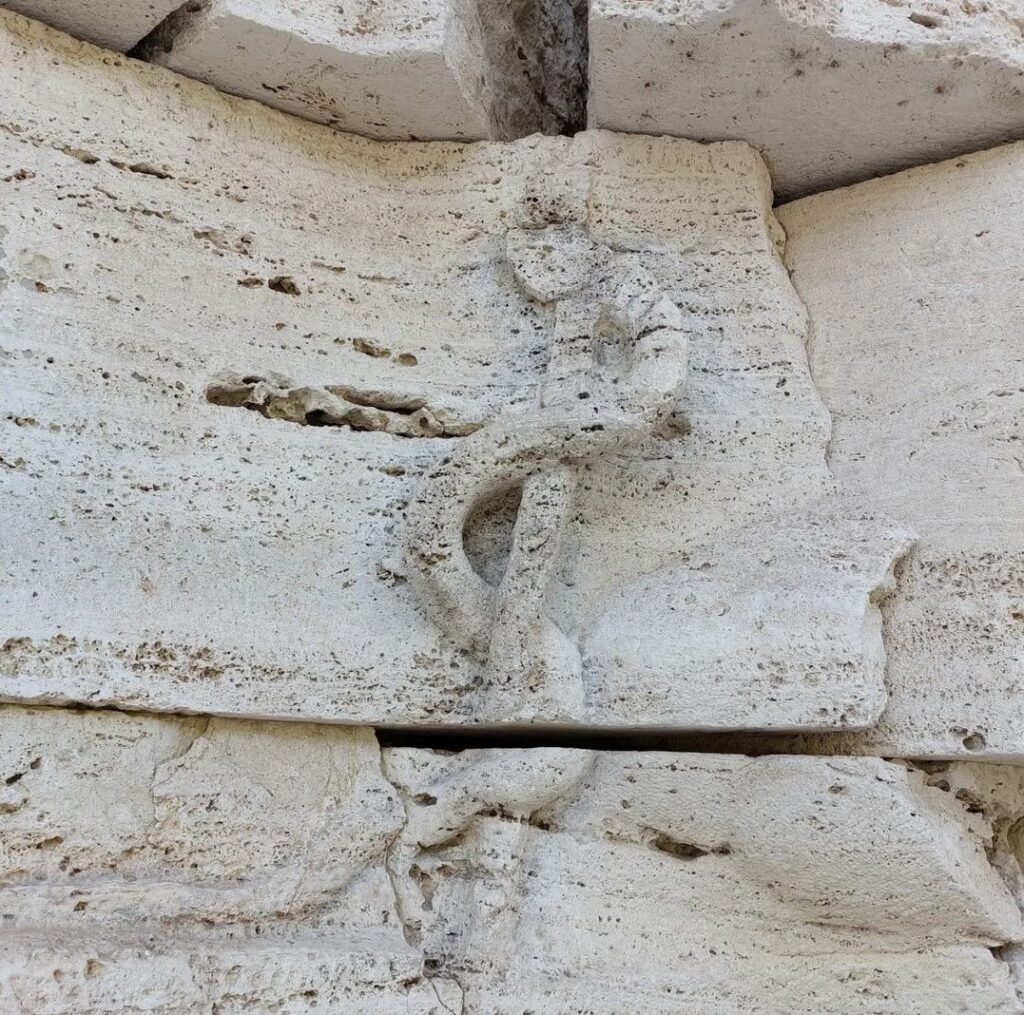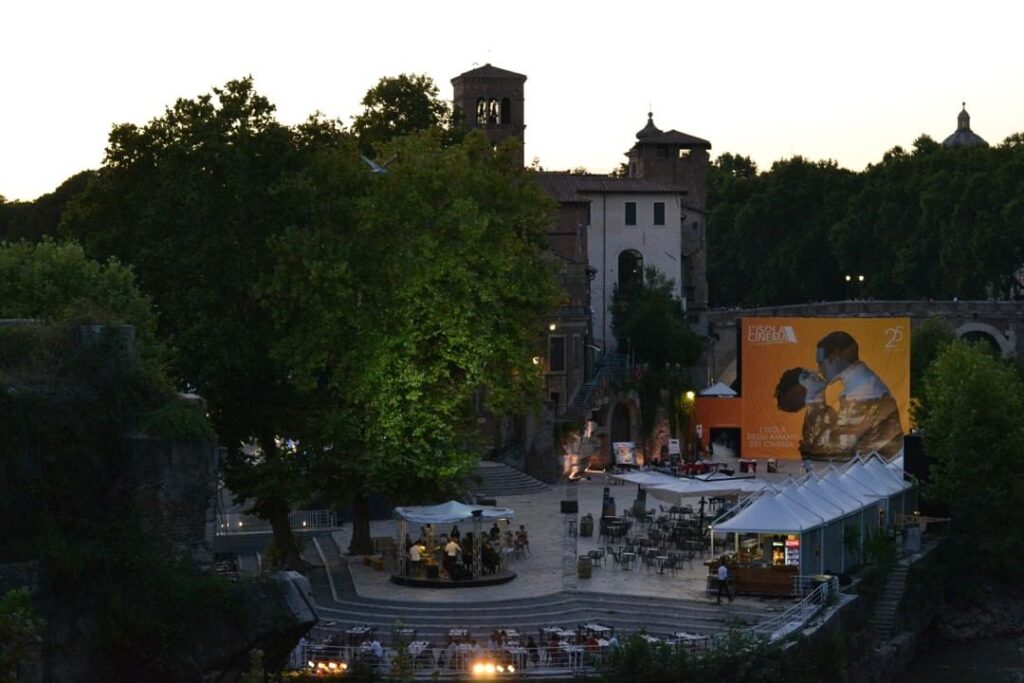The charming Tiber Island, in the heart of Rome, one of the smallest inhabited islands in the world, is connected to the two banks of the Tiber River by Ponte Cestio and Ponte Fabricio..

The ship-shaped Tiber Island today
The curious ship-shaped Island hosts the two ancient hospitals “Fatebenefratelli” and “Israelitico”, which boast a fascinating history of ancient myths and legends.
The place is said to have arisen from the wheat sheaves the Romans threw into the River, when Tarquinius Superbus was expelled from Rome in 510 BC.

A reconstruction of the ancient Tiber Island
A second more famous legend tells that, when the plague struck the City, a ship was sent to Greece to ask for help, and returned bringing from there the sacred serpent of Aesculapius, the God of Medicine. The plague miraculously disappeared and, as a sign of gratitude, a large temple dedicated to the God was built on the island, which soon became a place of care for the ill.

God Aesculapius’ serpent in travertine on the Tiber Island
The travertine bow still preserves a few decorations, such as the serpent coiled around the staff, symbol of Aesculapius. The ship even had a mainmast, originally an obelisk, two fragments of which are displayed at the “Museo Nazionale di Napoli”. Today, on the site of the ancient temple, stands the Church of San Bartolomeo all’Isola, with its interesting underground.

The Church of San Bartolomeo and the “Colonna Infame” on the Tiber Island
In front of the Church, where the obelisk once stood, now rises a column surmounted by a cross nicknamed “Colonna Infame” (disgrace pillar), where, in the late 1800s, a list of those who had not attended the Eucharistic Mass on Easter Sunday was posted.

Cinema under the Stars on Tiber Island Ph @Turismo Roma
The 300 metres long and 90 metres wide Tiber Island hosts today an authentic village, with churches, hospitals, bars and restaurants, and many cultural events are organized here, especially in Summer. The” Fatebenefratelli Hospital”, founded in 1585 by the monastic order of the same name, was expanded in the eighteenth century and completely modernized around 1930 by the architect Cesare Bazzani.
During the Second World War, the hospital also served as a hiding place for many Roman Jews, who escaped Nazi persecution, thanks to the “K disease”, a contagious illness totally invented by the two doctors Giovanni Borromeo and Adriano Ossicini, in order to keep the Germans away from the refuge.

The Caetani Tower and the Ponte Fabricio leading to the Tiber Island
The Torre Caetani, the small tower which rises by Ponte Fabricio, holds a unique legendary element.

The “Pulzella Innamorata” of the Tiber Island
The marble sculpture of a young girl’s head from the first century AD is set in one of the tower’s brick walls. The “Pulzella innamorata” (Maiden in Love), as it is called, is still waiting for her beloved to return from the war.
The charm of these legends and the architectural beauty of the Island make the site one of the most enchanting corners of the City. The Tiber water stretch crossing the historic centre of Rome and running on both sides of the Tiber Island has been therefore declared UNESCO World Heritage Site in 2024.
